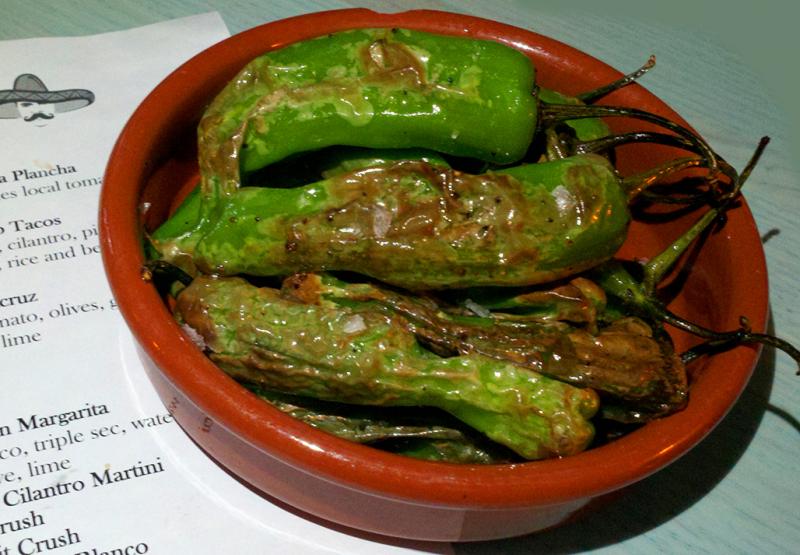Spice is the variety of life, and it hurts so good
If conventional wisdom is to be believed, the business of eating - both on the supply side and the service side - is experiencing a trend where diners and grocery shoppers are craving an increase in culinary heat. Maybe it’s because we’ve become more aware of the wide variety of foods available to us (thank you Food Network, etc., etc.), so we’re better prepared to experiment with new tastes. Raghu Kumar from Rehoboth’s Indigo Indian restaurant and Chef GG Gupta from Raas in Lewes tell me that they have noticed how many people ask for some of their already brightly spiced dishes to be served “extra hot.” Smartmouth that I am, a few months ago at Indigo I ordered my Lamb Vindaloo “15 hot” when server Sandeep offered it on a scale of one to 10. What happened next is burned into my memory, and will be covered in detail in an upcoming column on hallucinations, rapture and delirium.
You can always kick things up a notch at Minh’s Bistro Vietnamese restaurant on Coastal Highway at Route 24. Owner Thinh Pham honors chiliheads by positioning bright-red bottles of Sriracha on every table and along the bar. It’s optional, of course, but if you choose to take the plunge, you’ll want to make sure your affairs are in order.
The perceived intensity of a pepper can be attributed to the presence of a chemical called capsaicin. It is also a powerful antioxidant and has been proven to reduce the severity of migraine headaches. It relieves arthritis pain when applied topically and has strong antibacterial properties that help prevent sinus infections. And whatever sweat it might generate can cool you on hot days. This explains the tradition of spicy-hot cuisine popular in warm climates.
There’s no shortage of places here in Rehoboth that will happily spice up your mealtimes. Of course there’s Indigo (if you ask!). Chef Shawn Xiong at Confucius has a secret stash of cruel little peppers (you have to ask for them). Dale and John at Cooter Brown’s Twisted Southern Kitchen and Bourbon Bar will happily provide you with fresh jalapenos to sprinkle atop your Texas Frito Pie. Iron Hill Brewery’s Korean Barbeque Chicken Wings sound innocent enough, but they also pack a punch.
Capsaicin is oil-based, so any attempt to rinse away the pain with water, beer or a Tito’s & tonic does nothing more than spread the stuff around in your mouth. The more concentrated the capsaicin, the longer it lasts. Believe it or not, there is actually a quantified measurement of relative hotness (other than how loud your screams are). It’s called the Scoville Organoleptic Test and is based on how much water is required to dilute the pepper essence until it can no longer be tasted. For example, the Carolina Reaper, one of the hottest peppers known to man, comes in at a whopping 2,200,000 Scoville Heat Units, meaning that it requires two million two hundred thousand units (drops) of water to render a drop of Carolina Reaper essence tasteless. To give you a frame of reference, those little jalapeno slices that the spice wimps (annoyingly) pick off of their nachos rate a paltry 2,500 to around 6,000 Scovilles. So stop pickin’ at your nachos!
Wasabi is also hot, but very different from peppers. Its pain-producing compound, Allyl isothiocyanate, is similar to horseradish, but unlike capsaicin, it’s water-based. So though you might initially long for a swift demise after overserving yourself with that innocent-looking dollop of wasabi, a couple of gulps of a frosty Kirin or Tsingtao will change your mind sooner than if you’d popped a habanero (a wimpish 350,000 Scovilles).
Interestingly enough, the green “wasabi” paste perched on your plate of sushi or sashimi is, in fact, not wasabi at all. Pure wasabi is made by crushing the rhizomes of Japanese horseradish. It arrives at your table sort of wet and gooey, and will certainly get your attention. However, it’s difficult to keep fresh, so many sushi/sashimi joints serve a green-tinted paste of horseradish, starch and mustard. Some Cape Region restaurants do indeed offer the real thing, grating it fresh to order for perhaps a small upcharge. All you have to do is ask.
Cape Region eateries are brimming with all sorts of tastes just waiting for you to try. What’s the worst that can happen!? Double-check your last will and testament, order another Kirin Ichiban and enjoy. Oh, and don’t ask for ANYTHING “15 hot.”










































